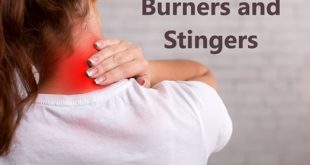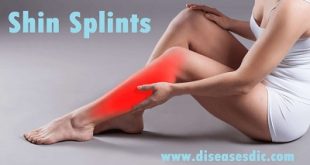Definition
Bone spurs also called osteophytes, are outgrowths of bone that develop along the edges of bones, often where two or more bones meet. They can form in the back, hip, sole, or heel of the foot, spine, neck, shoulder, or knee. Most bone spurs are caused by tissue damage brought on by osteoarthritis. Many are silent, meaning they cause no symptoms and only detected by an x-ray or other test for another condition. Others cause problems and require treatment.
If a spur breaks off from the bone, it can linger in the joint or get stuck in the lining of the joint. Such wandering bone spurs are called loose bodies. A loose body can make it feel like you can’t move a joint. This “locking” can come and go.
Types of bone spurs
Bone spurs are sometimes called by their medical names, osteophytes, and enthesophytes. Experts suggest both types of bone spurs are a reaction to skeletal stress.
- Osteophytes are typically found at the edge of a bone at a joint. They are considered to be the result of friction and stress on the bone and are often associated with osteoarthritis.
- Enthesophytes are bone spurs that develop where a ligament or tendon insert into a bone. (The site of attachment of soft tissue into bone is called an enthesis.) Enthesophytes may develop because of tight ligaments and tendons rubbing against bone, a soft tissue injury, or an inflammatory disease.
People do not always make the distinction between osteophytes and enthesophytes; Enthesophytes may sometimes be called osteophytes.
Bone spurs risk factors
Certain factors and conditions may contribute to the formation of osteophyte. These include:
- Increased age
- Disc degeneration
- Joint degeneration
- Sports injury or other joint injury
- Poor posture
- Genetics
- Congenital skeletal abnormalities
Causes of bone spurs
The most common cause is osteoarthritis, also known as degenerative joint disease. This is an age-related condition in which the cartilage within the joints at the ends of each bone, gradually wears away. Common causes of osteoarthritis include:
- Repetitive movements or frequent stress on the spine which causes tears in the cartilage between the discs and can damage the spinal vertebrae.
- The cartilage between the vertebrae and disc wears down and affects the spine’s motion
- Thickening calcification of ligaments
Other causes of bone spurs include spondylosis, trauma, infection (Osteomyelitis), thinning disc, spinal stenosis (foraminal and within the spinal canal), facet joint eburnation (degeneration), facet arthropathy (facet joint arthritis), degenerative discs disease, forestier’s disease (ligament hardening in the spine), or ankylosing spondylitis.
Bone spur in the spine
Symptoms
The most common symptoms of bone spurs include:
- Neck or back pain (eg, frequency and intensity varies)
- Pain and other symptoms may radiate (travel) from the neck (cervical radiculopathy) or low back (lumbar radiculopathy).
- Other symptoms may include: numbness, burning, and pins and needle sensations that may affect the shoulders, arms, hands, buttocks, legs or feet
- Pain that eases with rest and worsens with activity
- Muscle spasms
- Cramping
- Weakness
In severe cases, bone spurs may lead to loss of bowel or bladder control. This is a rare symptom that warrants emergency medical care.
Bone spur in the heel
Complications of bone spur
Bone spurs in the spine can cause conditions such as stenosis, nerve compression, and radiculopathy. Over time, the thickened ligament material calcifies and bone spurs develop. On your vertebrae, bone spurs can narrow the space that contains your spinal cord – a condition called stenosis. Stenosis most often occurs in the neck and lower back and imaging tests may show cervical bone spurs (neck) or lumbar bone spurs (lower back).
As stenosis occurs, as well as bone spurs, space where nerve roots exit the spine may occur causing nerve compression. The bone spurs can compress the spinal cord or its nerve roots and can cause radiculopathy, which is tingling, weakness, or numbness that travels down your arms or legs. The spurs cause pain when they touch against the nerves traveling along your spinal cord.
Diagnosis and test
After taking the patient’s medical history and performing a physical examination, physicians can rule out conditions that may have similar symptoms but different causes.
Tests that a doctor may order include:
Electroconductive tests: These show the degree and seriousness of the spinal nerve injury.
Computed tomography (CT) scans: A CT scan is similar to an MRI in that it provides diagnostic information about the internal structures of the spine.
Magnetic resonance imaging (MRI) scans: MRIs are needed to visualize soft tissues like discs in the spine. This type of imaging is very safe and usually pain-free.
X-rays: It shows bones and the space between bones. They are of limited value, however, since they do not show muscles and ligaments.
Treatment and medications
If spinal bone spurs are determined to be the likely cause of back pain and other symptoms, there are a wide range of possible treatment options.
Nonsurgical Treatment for Bone Spurs
Most patients with mild or moderate nerve compression and irritation from bone spurs can manage their symptoms effectively without surgery. The goal of nonsurgical treatment is to stop the cycle of inflammation and pain.
Medications
Medication, such as nonsteroidal anti-inflammatory medications (NSAIDs) and muscle relaxants may be recommended. Because of the risk of side effects, long-term use of medications should be approached with caution.
Short periods of rest
Activity may flare up inflammation in the joints. Short periods of rest can give the inflammation time to recede.
Physical therapy and exercise
Physical therapy, exercise, and manipulation (performed by chiropractors [DC], osteopaths [DO], and physical therapists [PT]), may alleviate back pain associated with bone spurs. These rehabilitation therapies attempt to restore flexibility and strength to the spine, improve posture and decrease nerve root compression.
Spinal manipulation
If the pain and inflammation caused by bone spurs are related to abnormal alignment and movement patterns in the spine, a spinal adjustment may help relieve symptoms. Chiropractors, osteopaths, and physical therapists use their hands or small instruments to apply pressure over the skin of vertebrae and manipulate the spine. The goal is to increase range of motion, reduce nerve irritability, and improve function. Spinal manipulation is not appropriate for everyone. A careful medical history, physical examination, and discussion of the risks and benefits of manipulation should occur prior to this type of treatment.
Weight loss
Losing excess weight can take pressure off the spine, reducing friction between the vertebrae’s facet joints and decreasing the likelihood of pain. Achieving an appropriate weight is especially effective in taking pressure off the lower back.
Surgical treatment
If a bone spur is causing pain that cannot be treated conservatively, your doctor may perform surgery to remove the bone spur. If you have another condition that is contributing to your spinal problem, such as osteoarthritis, your doctor may choose to remove the bone spur at the same time surgery is being performed to address the other problem.
Prevention
There are no ways to prevent the development of bone spurs. However, you can take self-care steps at home to keep your bones and joints healthy and decrease your risk of injuries.
Exercise regularly: Regular exercise is the best thing you can do to maintain strong, healthy joints, muscles, and bones. Low-impact exercises like walking, swimming, bicycling, or yoga can help you stay active while reducing stress and pressure on your joints and soft tissues.
Maintain a healthy weight: Excess body weight places more stress and pressure on weight-bearing joints. Talk to your doctor about ways you can maintain a healthy, stable weight.
Wear supportive footwear: Reduce the risk of heel spurs by wearing shoes that fit correctly and provide good heel and arch support. Additionally, supportive shoes will reduce pressure on your knees, hips, and back.
 Diseases Treatments Dictionary This is complete solution to read all diseases treatments Which covers Prevention, Causes, Symptoms, Medical Terms, Drugs, Prescription, Natural Remedies with cures and Treatments. Most of the common diseases were listed in names, split with categories.
Diseases Treatments Dictionary This is complete solution to read all diseases treatments Which covers Prevention, Causes, Symptoms, Medical Terms, Drugs, Prescription, Natural Remedies with cures and Treatments. Most of the common diseases were listed in names, split with categories.







